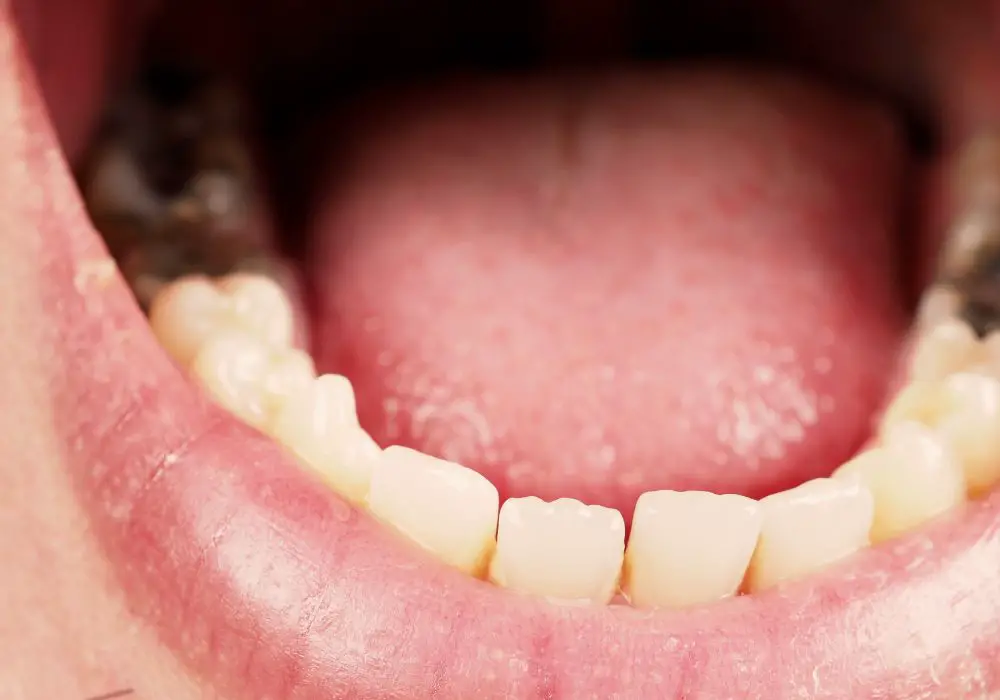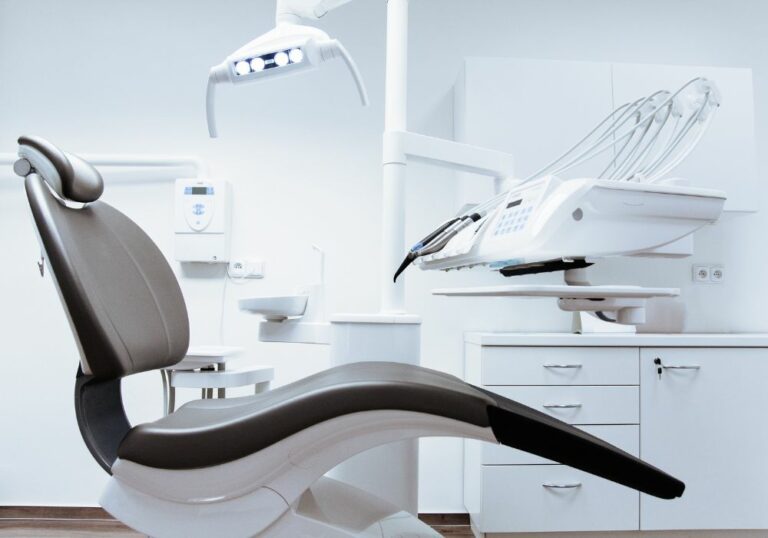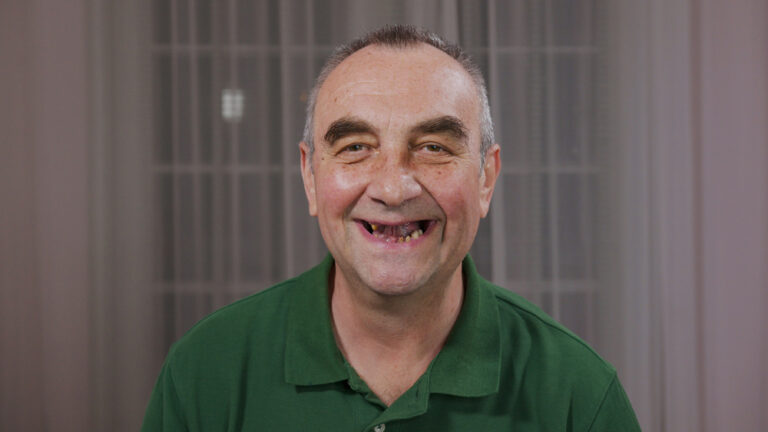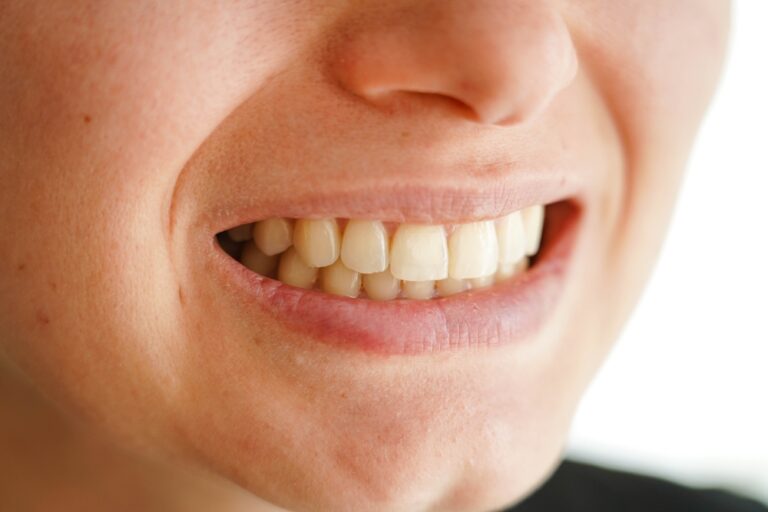Black decay, also known as black spot decay, is a common type of tooth decay that can affect people of all ages. It appears as black, brown or grey spots on the teeth near the gumline. While unsightly, black decay is treatable. Here is a comprehensive overview on the causes, risks, and removal treatments for black decay on teeth.
What Causes Black Decay on Teeth?

Black decay, like all tooth decay, is caused by acids eroding the tooth enamel. Bacteria in the mouth ingest food debris and release acid as a byproduct, which eats away at the enamel and leads to cavities. However, there are a few specific reasons why black decay occurs:
Thin Tooth Enamel
The enamel is the hard, outer layer that protects the sensitive dentin underneath. Some people naturally have thinner enamel from birth, making them prone to discoloration and decay. Even those with thick enamel can develop cracks and fissures over time, allowing stains and caries to take hold.
Cracks compromise the enamel surface, providing a pathway for plaque, acids and stains to penetrate deep into the tooth structure. They raise the risk for black decay significantly.
Dry Mouth
Saliva helps neutralize acids and wash away food particles in the mouth. A chronically dry mouth provides an ideal environment for plaque and bacteria to thrive, without saliva to counteract it.
Several factors can cause dry mouth:
- Medications like antihistamines, painkillers, antidepressants, blood pressure drugs and others reduce saliva flow as a side effect. Over 500 prescription and over-the-counter medications list dry mouth as a side effect.
- Health conditions such as diabetes, hypertension, Alzheimer’s disease, thyroid disorders and more are associated with reduced saliva.
- Aging slows down saliva production from the salivary glands. Nearly 30% of older adults suffer from persistent dry mouth.
- Habits like smoking cigarettes, drinking alcohol and breathing through the mouth parch the oral cavity. Anxiety and stress also lower saliva volume.
With inadequate saliva to wash it away daily, plaque thrives in the oral environment, causing black decay.
Poor Oral Hygiene
When plaque builds up along the gumline and between teeth, the bacteria proliferate and cause more severe enamel erosion. A lack of regular brushing and flossing allows plaque to accumulate and emit acids continuously onto the teeth.
Within 48 hours of not brushing, visible plaque colonies are established in the mouth. The longer plaque sits, the more damage it creates. Proper brushing and flossing removes bacteria and biofilm before it can produce enough acid to demineralize the enamel.
Frequent Sugary Foods and Drinks
The bacteria responsible for decay feed off carbohydrates from sugary foods and produce acids as a metabolic waste product. Each exposure to sugary snacks, sweets, soda, juice and the like lowers the mouth’s pH and activates the bacteria.
The more often you eat or drink sugar, the more acid gets produced as bacteria digest the sugars. Higher frequency leads to sustained acid attacks and accelerated development of cavities. Limiting sugar intake restricts opportunities for bacterial acids to erode the enamel.
Genetic Factors
Some people are genetically prone to tooth decay and erosion. The thickness and mineral content of enamel is determined by genetics. Those who inherit softer, thinner enamel are at a disadvantage when it comes to resisting plaque acids.
In addition, individuals with reduced saliva flow or altered oral bacteria from birth are set up for more decay and tooth problems. A family history of extensive cavities raises the odds of frequent decay.
What Are the Risks with Black Decay on Teeth?
If left untreated, black decay will continue eating through the enamel and compromise the dentin layer underneath. This leads to:
- Tooth Sensitivity – Once the dentin is exposed, hot, cold and sweet foods will trigger sharp pain and sensitivity, as the inner nerves are unprotected. Even ordinary brushing may be uncomfortable.
- Cavities – Enamel erosion creates holes in the teeth called cavities. Small cavities can become large, deep lesions that require extensive repair. The decay spreads horizontally and vertically into the tooth if not stopped.
- Tooth Infections – Bacteria and food debris collect in cavities, allowing infections to take hold at the pulp (nerve) of the tooth. This can cause severe tooth pain, swelling, gum inflammation, pus drainage and even tooth loss in advanced cases.
- Abscesses – A pocket of pus due to a tooth infection around the root and jaw bone. Abscesses require urgent dental treatment, as the infection can spread to other teeth, the bloodstream, and facial spaces.
- Tooth Fractures – Weakened tooth structure from black decay makes the enamel prone to cracking and fracturing under pressure. Pieces may chip off, causing discomfort when chewing.
- Bad Breath – Decaying food debris in the mouth creates unpleasant odors. Bacteria metabolize the debris and release foul sulfur compounds that smell bad on the breath.
Without treatment, the decay process will progress until it destroys the entire tooth and even adjacent teeth. Early intervention is key to preventing significant tooth damage.
How to Remove and Treat Black Decay on Teeth

Several treatments are available to remove black decay and stop it from spreading further. The choice depends on the location and extent of decay.
Dental Fillings
Fillings are used to “fill in” holes caused by decay. The dentist will numb the area, then use a drill to clean out the decayed lesion. The hole is filled with a material such as composite resin, silver amalgam or porcelain to protect the inner layers from further erosion.
Fillings are the simplest way to treat small to mid-sized areas of decay. They halt the decay process if placed before it reaches the tooth pulp. However, fillings will not improve the black stained appearance of the enamel.
Dental Crowns
Crowns (caps) cover the entire tooth like a helmet to protect decayed, damaged or cracked teeth. The dentist files down the top of the tooth and places a crown restoration over it. Crowns are made of porcelain fused to metal, ceramic, resin or gold.
Crowns prevent fracturing and stop decay from spreading to other areas of the tooth. They are typically used for more extensive decay when a large portion of natural tooth is already missing. Crowns can restore strength, function and aesthetics for badly decayed teeth.
Root Canals
If the inner pulp becomes infected due to deep decay, a root canal will be required. This involves numbing the area, drilling into the tooth pulp and removing all infected tissues and nerves. The canals are disinfected and filled with a rubber material. A crown is placed afterward.
Root canals allow you to save severely decayed teeth rather than extracting them. However, they do not eliminate dark stains from black decay on the enamel. A crown is placed for aesthetic reasons.
Tooth Extractions
In cases of severe tooth infection, fractures or advanced decay destroying the tooth completely, extraction is needed. Removing the tooth entirely is sometimes the only option for teeth with decay reaching the pulp. Implants or bridges can later replace the missing tooth if desired.
Dental Bonding
For small spots of black decay with minor enamel loss, dental bonding may help restore appearance without drilling. The dentist applies a putty resin material to fill in chips or discoloration, blending it with the natural tooth for a smooth finish.
While bonding can mask decay aesthetically, it does not stop the decay or repair the enamel loss. Regular dental visits are still essential to monitor bonded teeth for disease progression. More aggressive treatments may be needed in future.
Steps to Prevent More Black Decay
Removing current areas of black decay is the first step, but preventing more decay requires diligent daily oral care and smart dietary choices. Steps to take include:
- Brush thoroughly twice a day with a fluoride toothpaste
- Floss daily to remove plaque from between teeth
- Use an antiseptic mouthwash to kill bacteria
- Avoid sugary foods and drinks as well as acidic juices
- Drink water and chew sugar-free gum to produce more saliva
- Get professional cleanings and exams every 6 months
- Use sealants and fluoride treatments to strengthen enamel
- Take medications or products to increase saliva flow for dry mouth
- See your dentist as soon as you spot any new decay
With diligent home care and early treatment, black decay can be stopped before it compromises tooth structure. Monitor your oral health vigilantly and follow your dentist’s advice for prevention and management.
Frequently Asked Questions About Black Decay
Here are answers to some common questions about treating and removing black decay on teeth:
Does black decay go away on its own?
Unfortunately no – black decay will not go away without professional treatment. The decay will continue burrowing deeper over time if left alone. It requires dental methods like fillings, crowns or extractions to remove the infected tooth structure.
How can you tell if you have black decay?
Look for black, grey or brown spots near the gumline of your teeth. You may also experience tooth sensitivity, pain with hot/cold foods, or even bad breath. More advanced decay can lead to abscesses, swelling, toothaches and pus discharge. Notify your dentist immediately if you see any discoloration or have discomfort.
Is black decay different than other cavities?
Black decay is not fundamentally different than yellow, brown or white colored decay. The dark color is due to waste stains seeping into porous demineralized enamel. The causes and treatments are essentially the same as for other cavities.
Can one area of decay spread to other teeth?
Yes, decay can spread from an infected tooth to adjacent healthy teeth over time. The acidic byproducts dissolve enamel on nearby teeth. This allows bacteria to invade and decay to take hold throughout the mouth. Prompt treatment of any decay prevents it from compromising additional teeth.
What foods cause the most black decay?
Frequent consumption of sugary and acidic foods contributes most to black decay. Bacteria feed on sugars and release enamel-eroding acids. Hard candies, soda, citrus juice, baked goods, dried fruit and even some berries promote discoloration and caries due to their acidity and sugar content.







